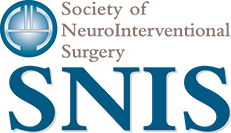March 13, 2023, marked five years since a severe stroke rocked the world of Deborah Martinez. She remembers it well—what she was doing, how she felt, and how at just 36 years old, she couldn’t believe she was having a stroke.
Martinez finished a staff meeting at the University of Georgia’s Graduate School shortly before 11 a.m. Her co-worker Angela asked her a question following the meeting. Martinez could tell that something was wrong with her response.
“Are my words slurring?” she asked Angela. Then her body dropped, and her head fell.
Angela’s mother had experienced a stroke, so she knew the symptoms and called 911 right away. First responders got there quickly and took Martinez to St. Mary’s Hospital in Athens. She was there by 11:20.
“They did all the tests and I was a 14 on the NIH stroke scale,” Martinez says. They started tPA immediately and then called Dr. Neil Woodall to see if he could perform a thrombectomy.
“Dr. Woodall and his team are the reason I’m talking to you today,” she adds.
According to Dr. Woodall, the procedure went like a dream. The staff in his hospital had never seen the results of a successful thrombectomy and were blown away.
“It created immediate buy in into our program,” he says. “Not every intervention is as impactful as the one we did for Ms. Martinez. But even small grades of improvement in disability can make huge differences in the lives of our patients.”
Like many, Martinez thought stroke was an “older” person problem. She knew that younger people could have them but wasn’t aware of how common it is for people of all ages to have a stroke.
Martinez had an active lifestyle—from sports as a child through her college years, to biking, running, walking, and hiking as an adult. However, chronic migraines have been a constant in her life for more than 30 years.
“Although the medical team cannot say for certain if there is a correlation between my migraine headaches and the stroke, there is growing evidence that migraine increases the overall risk of cerebrovascular diseases,” she says. “We should definitely be putting more research into this.”
What is known, however, is that Martinez’s time to treatment and the ability of the St. Mary’s team to perform a thrombectomy was critical in her good outcome.
“The fact that Deborah’s co-workers recognized the symptoms of stroke, called EMS, and got her to the closest center capable of doing a thrombectomy are what really made a difference in her case,” Dr. Woodall says.
Every year on Martinez’ “strokeversary” she sends Dr. Woodall and other specialists who were part of her care team that day a card thanking them for saving her life. She wants to be sure they know they will never be forgotten or taken for granted.
Turns out, Martinez was Woodall’s first thrombectomy patient.
“Every procedure that a surgeon does as his or her first is somewhat nerve-wracking,” he says. “I was fortunate that Deborah’s case was a textbook intervention with an excellent result.”
Today, Martinez has a little weakness on the left side of her body, but she feels lucky. “When you see other people who didn’t get thrombectomy, you see what might have been for me,” she adds.
Knowing what she knows now, Martinez makes sure to spread the message that time is brain. “If you or anyone you are with think you may be having a stroke, call 911 immediately. When the paramedics arrive, ask if they can get you to a Level 1 Stroke Center Hospital with a neurointerventional care team,” she advises. “This can save your life.”

